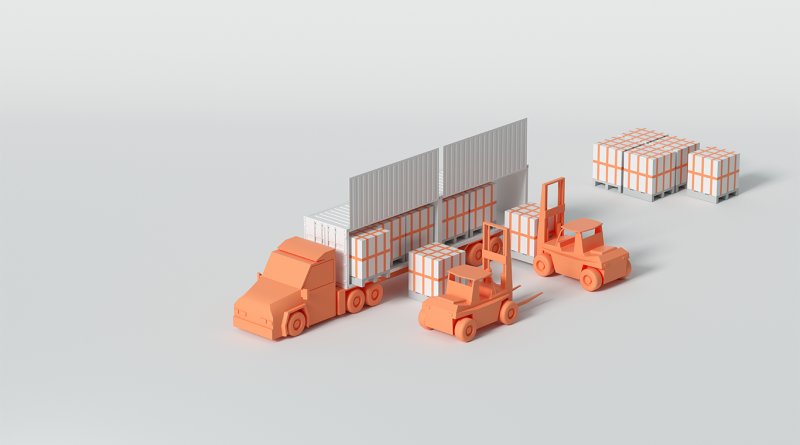7 Differences Between Upstream and Downstream Supply Chains
Understanding the supply chain is crucial for any business looking to optimize its operations. The supply chain can be divided into two main segments: upstream and downstream. While they are interconnected, they have distinct roles and challenges. Below, we explore the key differences between these two segments to help you navigate the complexities of supply chain management.
1. Focus Areas
- Upstream: The upstream supply chain focuses on the procurement and sourcing of raw materials required for production. This includes activities such as supplier selection, purchasing, and managing the flow of materials into the company. This segment is heavily involved in establishing strong supplier relationships and ensuring that the raw materials meet quality standards before entering the production line. Managing upstream supply effectively can reduce material costs and prevent production delays.
- Downstream: In contrast, the downstream supply chain is concerned with the distribution of finished products to the end customer. This involves activities like warehousing, distribution, sales, and customer service. Downstream activities often focus on demand fulfillment, managing customer relationships, and ensuring timely delivery to meet consumer expectations. Efficient downstream management can enhance customer satisfaction and brand loyalty.
2. Primary Objectives
- Upstream: The main goal of the upstream supply chain is cost optimization. Businesses aim to secure high-quality raw materials at the best possible price, ensuring that production can occur without interruptions. This segment also focuses on reducing risks related to supply chain disruptions by diversifying suppliers and maintaining buffer stocks where necessary.
- Downstream: The downstream supply chain prioritizes customer satisfaction. The focus here is on delivering products on time, maintaining product quality, and ensuring a positive customer experience. Companies often implement advanced tracking and customer service systems to monitor delivery times and handle any post-sale issues, further strengthening customer relationships.
3. Key Activities
- Upstream: Key activities in the upstream segment include supplier management, procurement processes, and logistics coordination to bring materials into the production process. This can involve negotiating long-term contracts with suppliers, managing inventory levels to avoid shortages, and coordinating with logistics providers to make sure there is timely material deliveries. Effective upstream management can lead to significant cost savings and improved production efficiency.
- Downstream: Downstream activities involve order fulfillment, distribution channel management, marketing, and after-sales support, all aimed at efficiently getting the product to the end user. This segment is responsible for ensuring that the product reaches the customer in the best condition and as quickly as possible. Efficient downstream processes can reduce lead times and inventory costs, contributing to higher profit margins.
4. Supply Chain Relationships
- Upstream: Relationships in the upstream supply chain are typically with suppliers and manufacturers. These relationships are often long-term and focused on securing reliable sources of materials. Building strong relationships with suppliers can result in better pricing, improved quality, and more reliable delivery schedules. Companies may also collaborate with suppliers on product development to ensure materials meet specific production requirements.
- Downstream: Downstream relationships are primarily with distributors, retailers, and customers. These relationships are crucial for maintaining market share and customer loyalty. Effective downstream relationship management involves understanding customer needs, providing reliable delivery services, and offering exceptional customer support. Companies may use CRM systems to track and analyze customer interactions, allowing for more personalized services.
5. Information Flow
- Upstream: In the upstream supply chain, information flow is usually about demand forecasting, material requirements, and production scheduling, which helps in planning and procurement. This information allows businesses to predict the quantity and timing of material needs, reducing the risk of overstocking or stockouts. Data sharing between suppliers and manufacturers can increase collaboration and lead to more accurate forecasting.
- Downstream: Downstream information flow focuses on sales data, customer feedback, and market trends, which are critical for adjusting production schedules, managing inventory, and improving customer service. Companies use this data to make informed decisions on product distribution, marketing strategies, and customer service improvements, ultimately driving sales growth and improving customer loyalty.
6. Challenges
- Upstream: Challenges in the upstream supply chain often revolve around supply chain disruptions, fluctuating raw material prices, and managing supplier relationships. Companies must navigate risks such as geopolitical events, natural disasters, and supplier bankruptcy, which can impact material availability and costs. Effective risk management strategies, such as diversifying suppliers and sourcing alternatives, are essential for mitigating these challenges.
- Downstream: The downstream supply chain faces challenges such as meeting delivery deadlines, managing inventory levels, and responding to changes in customer demand and preferences. Companies must also deal with issues like product recalls, returns, and customer complaints, which can negatively impact brand reputation. Implementing agile supply chain practices and responsive customer service can help address these challenges.
7. Impact on Business
- Upstream: Effective management of the upstream supply chain can lead to lower production costs and a more stable supply of materials, which directly affects profitability. By optimizing procurement and supplier management, companies can reduce material costs, minimize production downtime, and improve overall operational efficiency.
- Downstream: A well-managed downstream supply chain enhances customer satisfaction, brand loyalty, and market share, which are vital for long-term business success. Companies that excel in downstream processes often enjoy higher customer retention rates, increased sales, and a stronger market position.
While both upstream and downstream supply chains are integral to a business’s success, they serve different purposes and face unique challenges. Understanding these differences allows businesses to optimize each segment, leading to a more efficient and effective overall supply chain.
